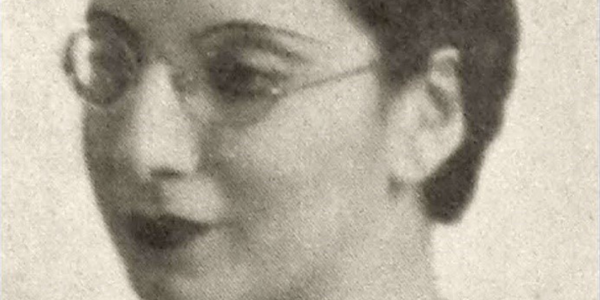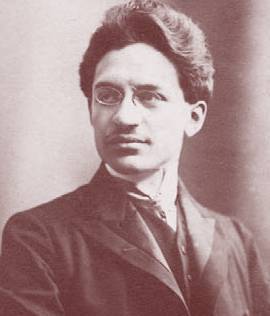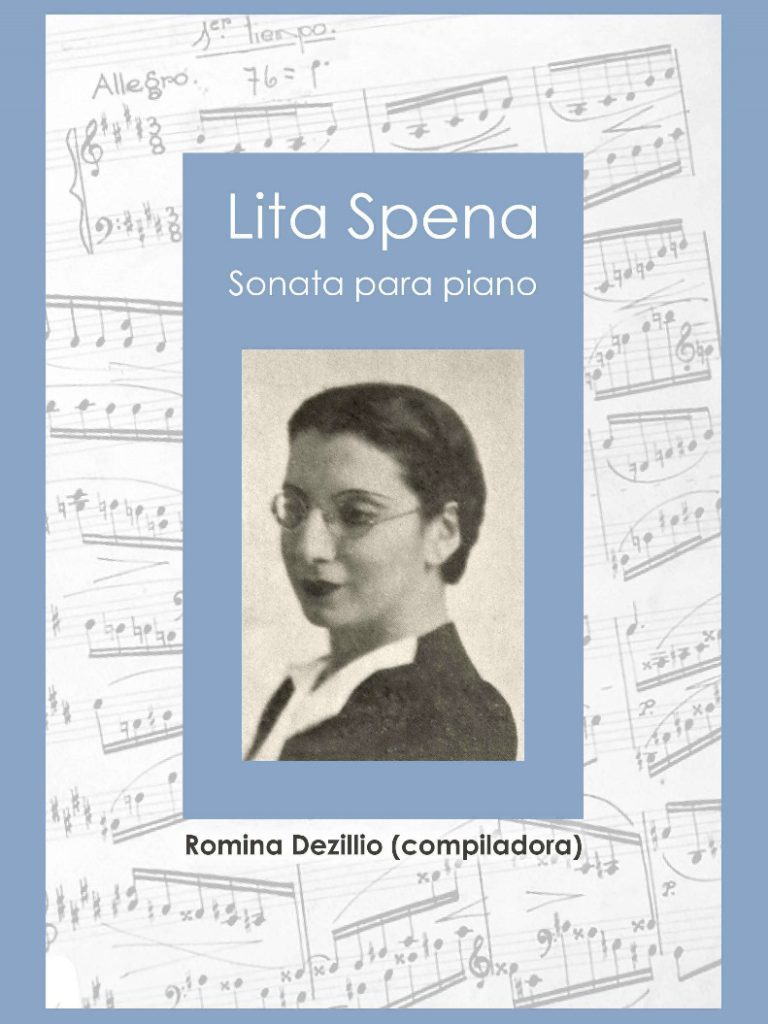We would like to thank Florencia Zuloaga for collaboration on this post. We encourage you to watch Florencia Zuloaga’s archived webinar here: “Compositores Mujeres de latinoamerica y la península ibérica“ in Spanish with Ester Vela and Gabriela Calderon Cornjego.

1. Lita Spena (1904-1989) was a student of acclaimed Italian piano pedagogue Vicenzo Scaramuzza.
Vincenzo Scaramuzza was a pianist and pedagogue who left his native Naples, Italy and relocated to Buenos Aires, Argentina in the early 1900s. After a successful career as a performer, he established himself as one of the leading pedagogues in Argentina. His pedagogical legacy includes pianists Martha Argerich, Enrique Barenboim, Bruno Gelber, and Sylvia Kersenbaum, among many others. Scaramuzza’s pianistic genealogy is quite prolific as well, branching into younger generations: Daniel Barenboin (son of Enrique), Ingrid Fliter (student of Elizabeth Westercamp), Nelson Goerner (student of Carmen Scalccioni), and Horacio Lavandera (student of Antonio De Raco), among many others.


2. Spena played at the Argentine premiere of Stravinsky’s Ballet Les Noces (“The Wedding”).
The Argentine premiere was in 1926 at the Teatro Colón, the country’s most renowned opera house. The Neoclassicist influence of Stravinsky’s compositional style is evident in Spena’s own piano works, which showcase the use of unprepared dissonances, contrapuntal practices often regarded as a “return to Bach,” and formal structures and textures reinstating a Classical approach.
3. The closing movement in Spena’s Piano Sonata is titled “Toccata.”
Lita Spena’s Sonata is the first documented piano composition based on the toccata genre written by an Argentine composer. Spena’s toccata features the prototypical use of engine-like motion characteristic of this genre. By using a toccata as the closing movement of a larger work, Spena follows the precedent set by French composers Debussy (Pour le Piano) and Ravel (Le Tombeau de Couperin).


4. Spena was a member of the chamber group Trio Argentino, with Celia Torrá on violin and Blanca Cattoi on violoncello.
Furthermore, Spena and Torrá were among the first female composition students at the National Conservatory of Music and Theater, which was founded in 1924. Spena and Torrá both wrote piano sonatas during the 1930s; in both cases, they dedicated their piano sonatas to Athos Palma, who was appointed professor of Harmony at the National Conservatory during that period.
5. Titled “Little water trail,” the closing movement in Spena’s Piano Preludes features fast, undulating figures written in parallel fourths.
This figuration is similar to Czerny’s Op. 140 No. 4 and Clementi’s Gradus ad Parnassum No. 17. Beethoven’s Diabelli Variation No. 23 is another example of composers paying homage to this unmistakable technical figuration. Such undulating figures are a representation of the resplendent, dazzling effects of running water, and the continuous rhythmic pattern continues almost uninterrupted for the duration of the prelude, making it a miniature “tour de force.” The compositional approach of pairing instrumental virtuosity with programmatic titles that refer to water has great precedent in the piano literature; some examples include Ravel (Jeux d’Eau), Debussy (Jardins sous la pluie), and Liszt (Au bord d’une source, Fountains of the Villa d’Este).


Sources
Dezillio [et al.], Romina. Lita Spena. Sonata Para Piano. Ciudad Autónoma de Buenos Aires: EDAMus. Editorial del Departamento de Artes Musicales, 2020. http://assets.una.edu.ar/files/file/artes-musicales/2020/2020-una-ms-edamusromina-dezillio-litaspena-sonatapiano.pdf.
García Muñoz, Carmen. “Spena.” In Diccionario de La Música Española e Hispanoamericana, edited by Emilio (dir) Casares Rodicio, 10:56. Madrid: SGAE, 2002.
Lian, Marcelo G., “The Pedagogical Legacy of Vicente Scaramuzza: The Relationship Between Anatomy of the Hand, Tone Production, and Musical Goals” (2013). Student Research, Creative Activity, and Performance – School of Music. 66. https://digitalcommons.unl.edu/musicstudent/66